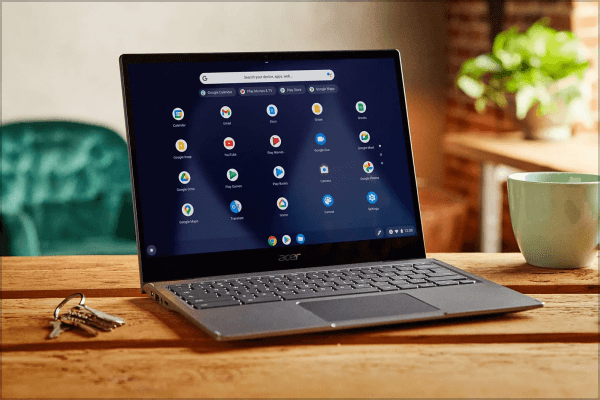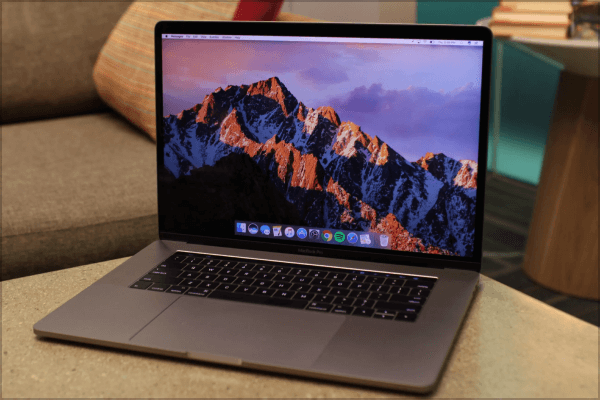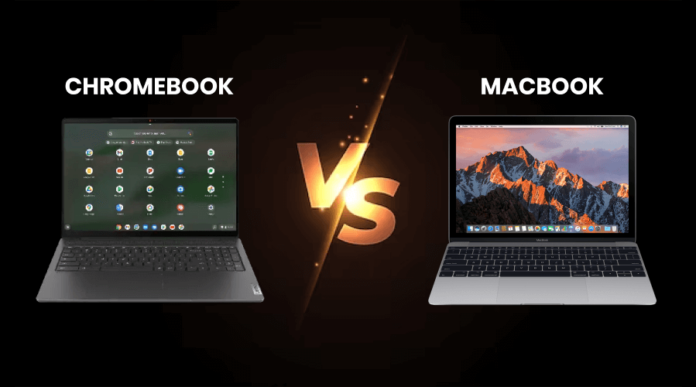The debate between Chromebook vs. MacBook sparks curiosity and deliberation in tech choices. As consumers navigate the labyrinth of options, the divergent paths of these devices captivate attention. Exploring the nuances of Chromebook vs. MacBook unveils a tapestry of features, each weaving a distinct narrative of functionality and allure.
In this comprehensive comparison, we embark on a journey to dissect the essence of these two titans of technology. Beyond the surface, we delve into the intricacies that define their existence, paving the way for an informed decision in the ever-evolving landscape of digital companionship.
Here is a Detailed Comparison for Chromebook vs. MacBook
 Chromebook Vs. Macbook Security
Chromebook Vs. Macbook Security
- Chromebook Security
- Chrome OS adopts a unique approach, leveraging its browser-based architecture to minimize vulnerabilities.
- Sandbox environment isolates processes, limiting the impact of malware and malicious software.
- Automatic updates ensure the operating system and applications are continuously patched against emerging threats.
- Built-in security features such as verified boot provide added protection against unauthorized access.
- Google’s commitment to security includes frequent security audits and bug bounty programs to identify and address potential weaknesses.
- MacBook Security
- macOS boasts robust security features like Gatekeeper, which verifies the authenticity of apps before installation.
- FileVault encryption safeguards data, ensuring confidentiality even if the device falls into the wrong hands.
- App Sandbox restricts the capabilities of applications, preventing them from accessing sensitive system resources.
- Apple’s stringent app review process helps maintain the integrity of the App Store, reducing the risk of malicious software.
- Regular security updates from Apple address vulnerabilities and strengthen the overall security posture of macOS devices.
 Chromebook Vs. Macbook Price
Chromebook Vs. Macbook Price
A notable contrast between Chromebooks and MacBooks lies in their pricing. Chromebooks typically present a more budget-friendly option, spanning from approximately $200 to $700. Conversely, MacBooks initiate at a higher entry point of $999, ascending to over $2,000 for premium configurations.
This substantial variance in pricing reflects diverse market strategies, with Chromebooks catering to cost-conscious consumers and educational sectors, while MacBooks target users seeking premium quality and performance. Despite the disparity, both offer distinct value propositions, aligning with individual preferences and financial considerations. Whether opting for affordability or investing in upscale features, the pricing discrepancy delineates the spectrum of choices available to tech enthusiasts.
 Performance and User Experience
Performance and User Experience
- Chromebook Performance
- Chrome OS is efficient for web browsing, email, and primary productivity tasks.
- However, it faces limitations in resource-intensive activities such as gaming and video editing due to its lightweight hardware.
- Notably, Chromebooks are celebrated for their rapid boot times and lightweight design, enhancing user convenience and portability.
- MacBook Performance
- Apple’s MacBook lineup boasts powerful hardware configurations and an optimized software ecosystem, ensuring smooth and responsive performance.
- The seamless integration between macOS and Apple’s hardware components contributes to an enhanced user experience characterized by fluidity and reliability.
- MacBooks excels in handling demanding tasks such as graphic design, video editing, and software development thanks to their robust processors and ample memory capabilities.
Also See: How to Reset Macbook Air: A Comprehensive Guide
 Software and App Ecosystem
Software and App Ecosystem
- Chromebook Software
- Chrome OS operates primarily through web-based applications, aligning with Google’s suite of productivity tools like Google Docs, Sheets, and Slides.
- The availability of Android apps via the Google Play Store expands Chromebook functionality, offering access to a broader range of applications.
- However, compatibility issues may arise with specific professional software, limiting the device’s suitability for specialized tasks such as graphic design or video editing.
- MacBook Software
- macOS boasts a diverse software ecosystem comprising a plethora of native applications as well as a vast array of third-party software options.
- Creative professionals benefit from the availability of professional-grade software tailored for tasks like photo editing (Adobe Photoshop) and video production (Final Cut Pro).
- The seamless integration of macOS with other Apple devices and services enhances productivity and workflow efficiency, facilitated by features like Continuity and iCloud synchronization.
 Design and Build Quality
Design and Build Quality
- Chromebook Design

Image Source: trustedreviews
- Chromebooks are renowned for their lightweight and portable designs, making them ideal companions for users on the go.
- Their durability renders them suitable for educational environments, where robustness is essential to withstand daily wear and tear.
- Various design aesthetics exist across Chromebook models, catering to diverse consumer preferences and needs.
- MacBook Design

Image Source: diaqnoz.az
- Apple’s MacBook lineup is distinguished by its premium build quality and sleek design aesthetics, reflecting its commitment to craftsmanship.
- High-quality materials, such as aluminum alloys, are meticulously chosen to ensure durability and a refined appearance.
- MacBooks’ thin and lightweight form factors enhance portability, making them convenient options for users seeking style and functionality.
 Chromebook Vs. Macbook: Which is Better
Chromebook Vs. Macbook: Which is Better
- Chromebook
- Ideal for users primarily engaged in web browsing, email, and basic productivity tasks.
- It offers a more affordable option, making it suitable for budget-conscious consumers and educational institutions.
- Chrome OS provides a straightforward and user-friendly interface, perfect for those seeking simplicity and ease of use.
- Lightweight design and fast boot times enhance portability and convenience for users on the move.
- Integration with Google’s suite of productivity apps and access to Android apps via the Google Play Store broaden functionality.
- MacBook
- Preferred choice for users requiring robust performance for demanding tasks such as graphic design, video editing, and software development.
- It boasts premium build quality, sleek design aesthetics, and attention to detail, reflecting Apple’s commitment to craftsmanship.
- macOS offers a diverse software ecosystem with access to professional-grade software and seamless integration with other Apple devices and services.
- Superior hardware configurations ensure smooth multitasking and responsiveness, catering to power users and creative professionals.
- Thin and lightweight form factors enhance portability without compromising on performance or functionality.
Choosing between Chromebook vs. MacBook depends on individual needs, preferences, and budget constraints. While Chromebooks are affordable and straightforward, MacBooks offer unparalleled performance, design, and software ecosystem for those requiring advanced functionality and power.
Conclusion
The verdict hinges on individual priorities and preferences in the nuanced battle of Chromebook vs. MacBook. With their affordability and simplicity, Chromebooks appeal to budget-conscious users and those seeking straightforward functionality. On the other hand, MacBooks stand as the epitome of premium performance, design, and software integration, catering to professionals and enthusiasts demanding top-tier capabilities.
Whether it’s the lightweight convenience of a Chromebook or the powerhouse performance of a MacBook, both devices carve their distinct niche in the digital landscape. Ultimately, the choice between Chromebook and MacBook underscores the diverse needs and aspirations driving today’s tech-savvy consumers.

